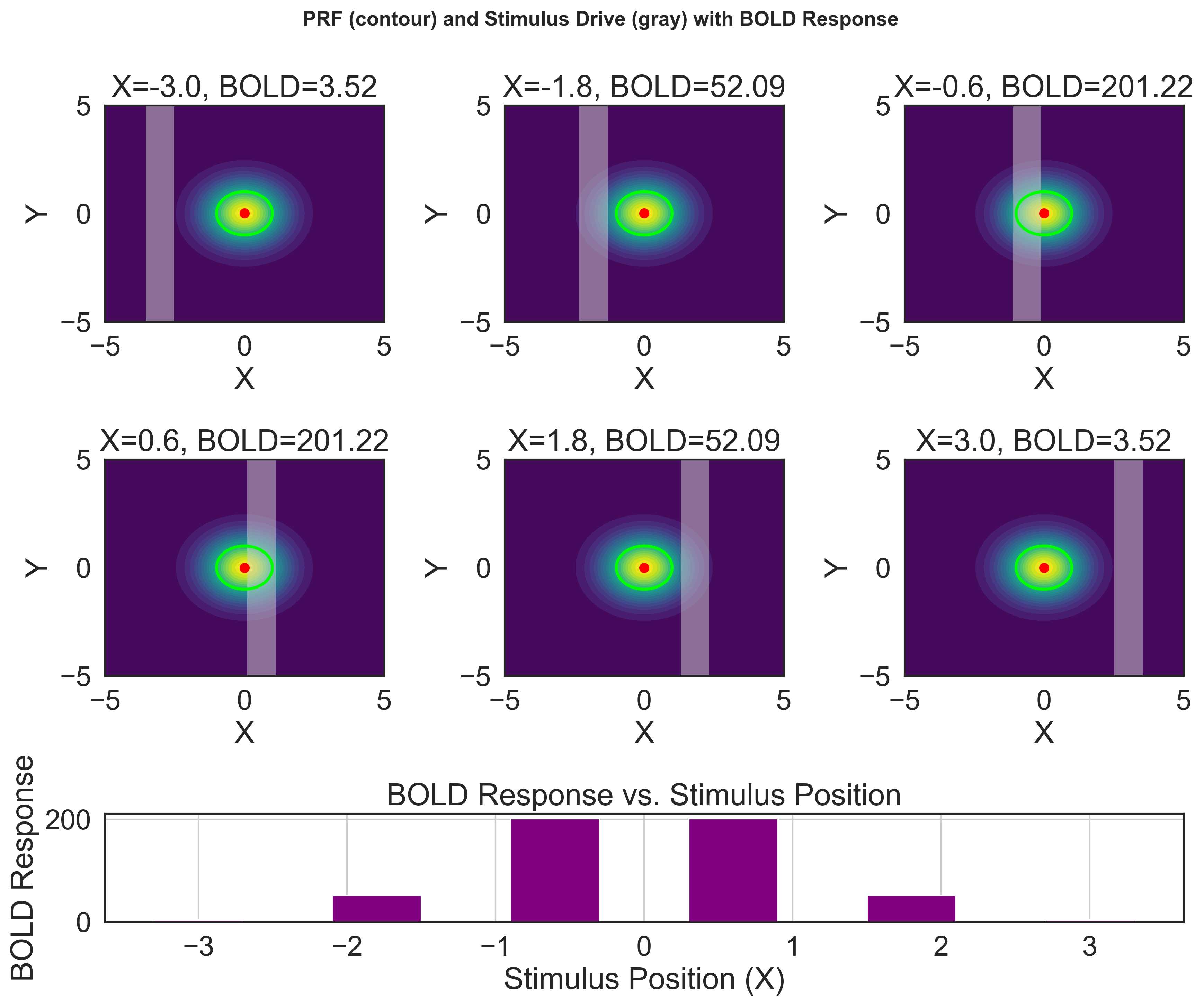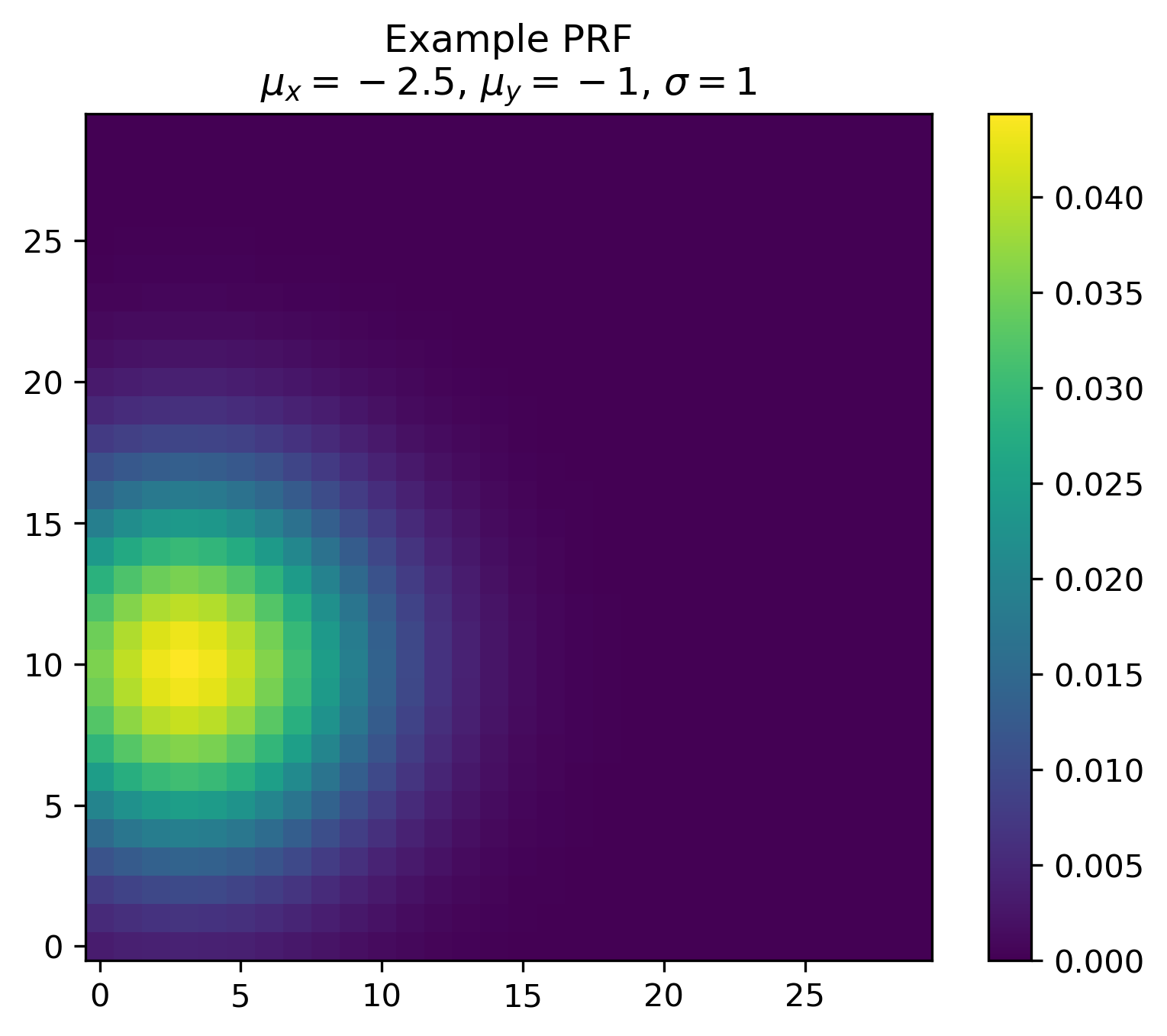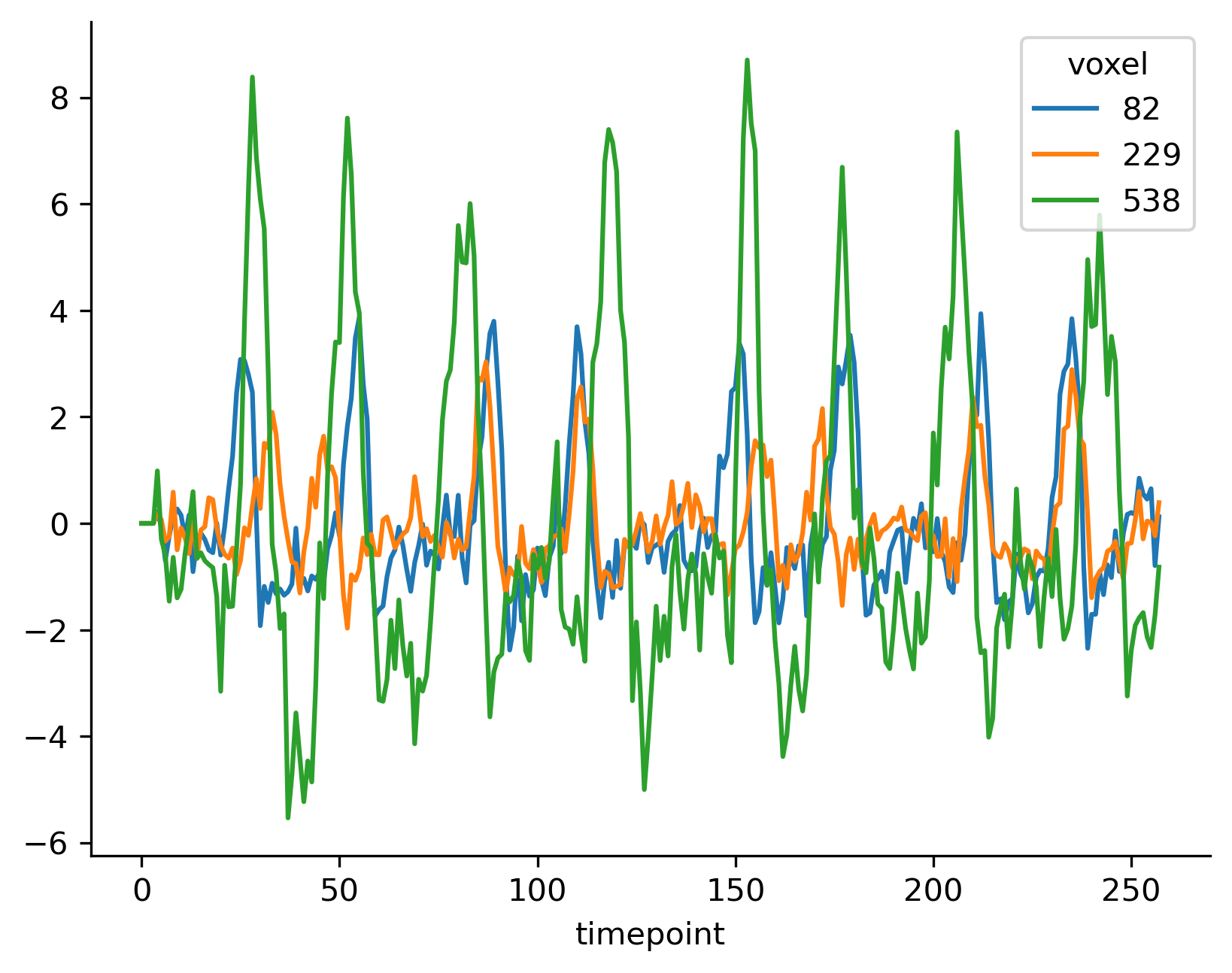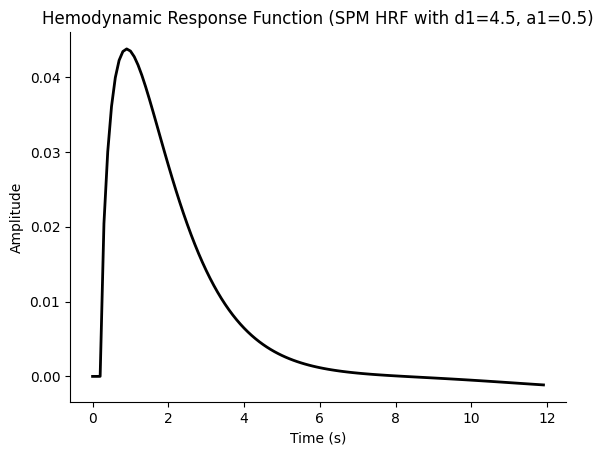Standard PRF Model
The encoding function predicts the BOLD response
The encoding function predicts the BOLD response as the dot product of the PRF and stimulus drive
where

Encoding models as your training ground
Encoding models, like the visuospatial PRF model lend themselve extremely well for fitting usin computational graphs/GPUs.
-
7T data consists of ~ 300,000 voxels
-
Every time series ~250 time points
-
Simplest PRF model has 5 parameters
-
~ 400 million variables
-
Without GPUs I couldn't do the research I do the way I do it.
Assignment 2
Implement a simple visuospatial PRF model using Tensorflow/Jax/Pytorch.
notebooks/3_implement_prf.ipynb

Hint 1: Vectorize, vectorize, vectorize
Do not use for loops in plain Python
predictions = []
for i in S.shape[0]: # loop over time
pred = (S[i] * prf).sum(axis=[1, 2])
Use matrices (which can be heavily optimized, potentially on GPU):
predictions = (S * prf).sum(axis=[1, 2])
Use comments to remember which dimension is which
prf = get_prf(...) # (n_prfs, n_x_coordinates, n_y_coordinates)
Hint 2: Broadcasting
# Inputs:
# S: (n_timepoints, n_x, n_y) = (238, 30, 30)
# prf: (n_prfs, n_x, n_y) = (1000, 30, 30)
# Reshape for broadcasting:
S_expanded = S[:, tf.newaxis, :, :] # Shape: (238, 1, 30, 30)
prf_expanded = prf[tf.newaxis, :, :, :] # Shape: (1, 1000, 30, 30)
# Vectorized operation (e.g., element-wise multiply):
output = (S_expanded * prf_expanded).sum(axis=[2,3]) # Shape: (238, 1000)
Memory savings: 214M (
Key Idea
- No
repmat: Usetf.newaxisto add singleton dimensions. - Broadcasting: TensorFlow automatically expands dimensions for element-wise ops.
- Efficiency: Avoids copying data; computes on-the-fly.
Why This Works
S_expandedandprf_expandedalign via broadcasting rules.- No memory blowup: Only 2 small tensors are stored.
- Efficiency: Avoids copying data; computes on-the-fly.
- XLA Optimization: Fuses operations into a single computational graph, reducing overhead and accelerating execution.
Hint 3: Start small
Select one voxel to prototype
good_voxels = [82, 229, 538]
voxel_ts = v1_ts[82] # maybe do not do this
voxel_ts.shape
(258,)
voxel_ts = v1_ts[[82]] # do this
voxel_ts.shape
(258, 1)
Plot, plot, plot
good_voxels = [82, 229, 538]
v1_ts[good_voxels].plot()
sns.despine()

Hint 4: LLMs for the win
- Ask ChatGPT/Gemini/Le Chat/Claude to help you.
- But maybe not do everything for you?
- In my experience: You need to understand the code LLMs give you
Hint 5: Hemodynamic delay/temporal smoothing
